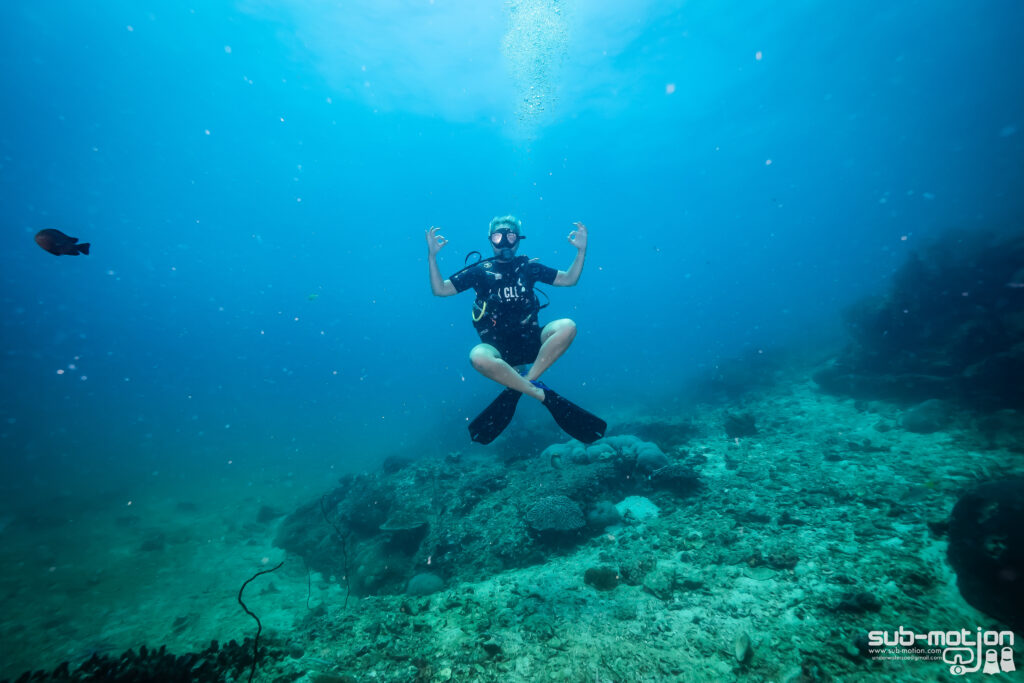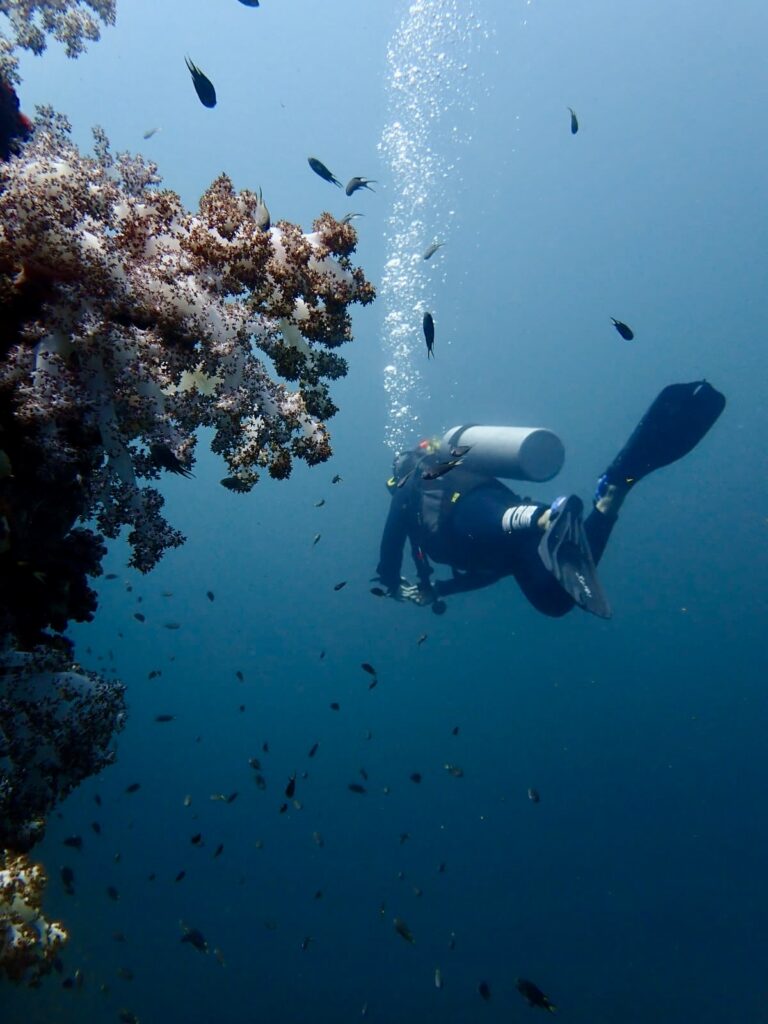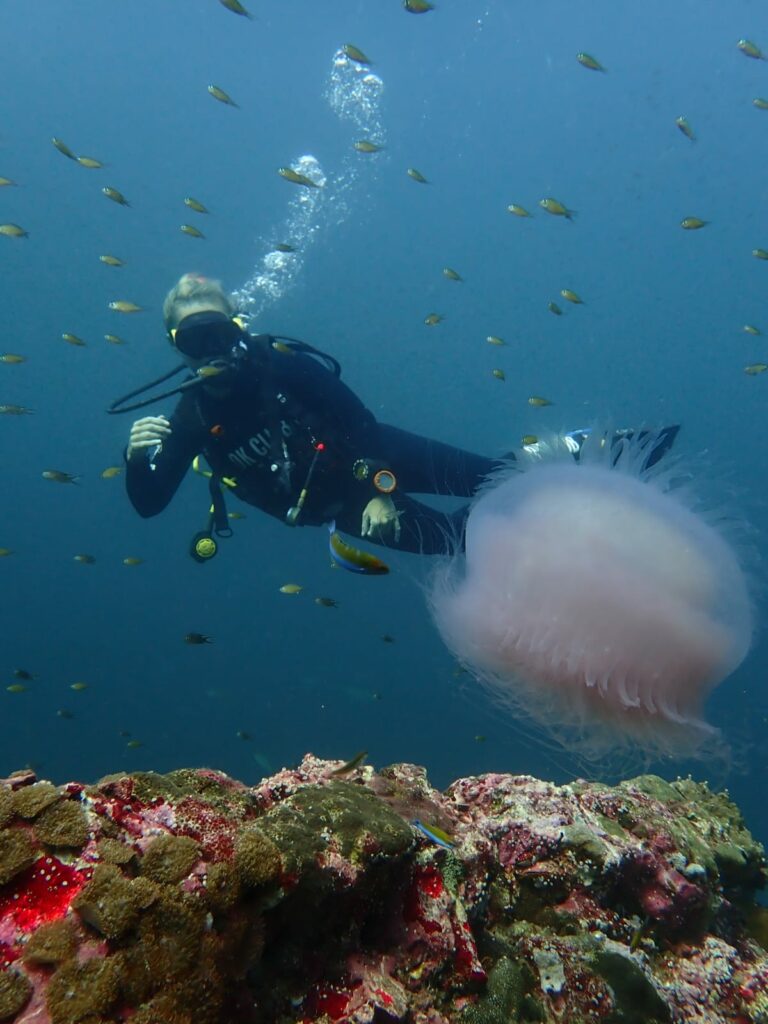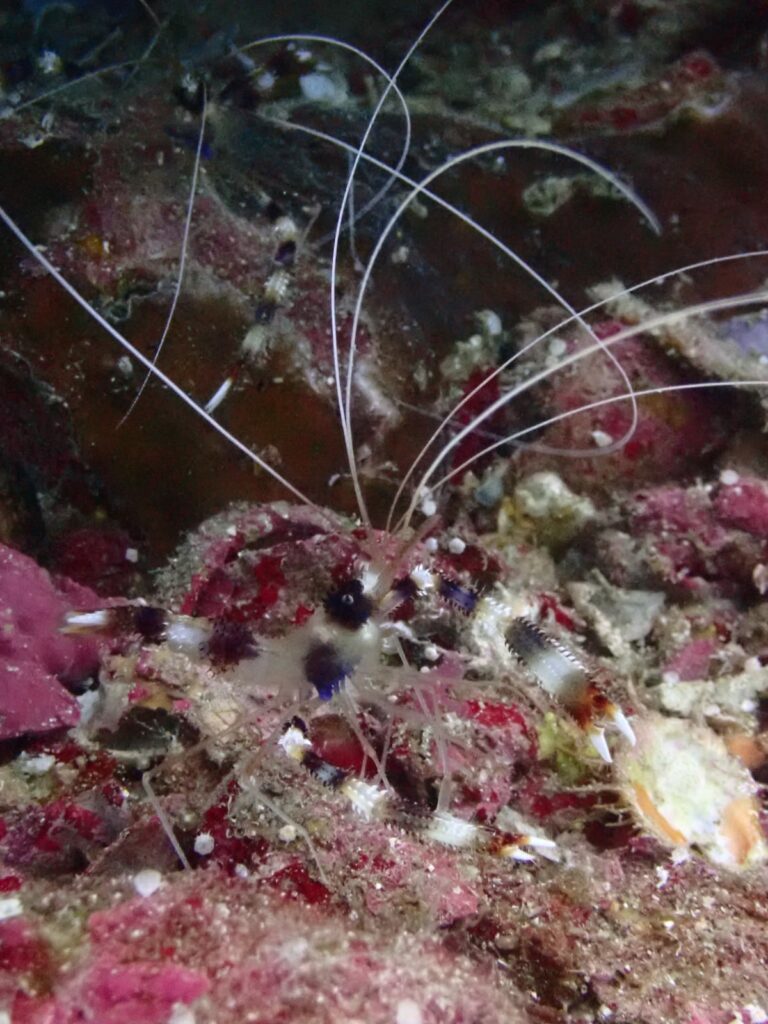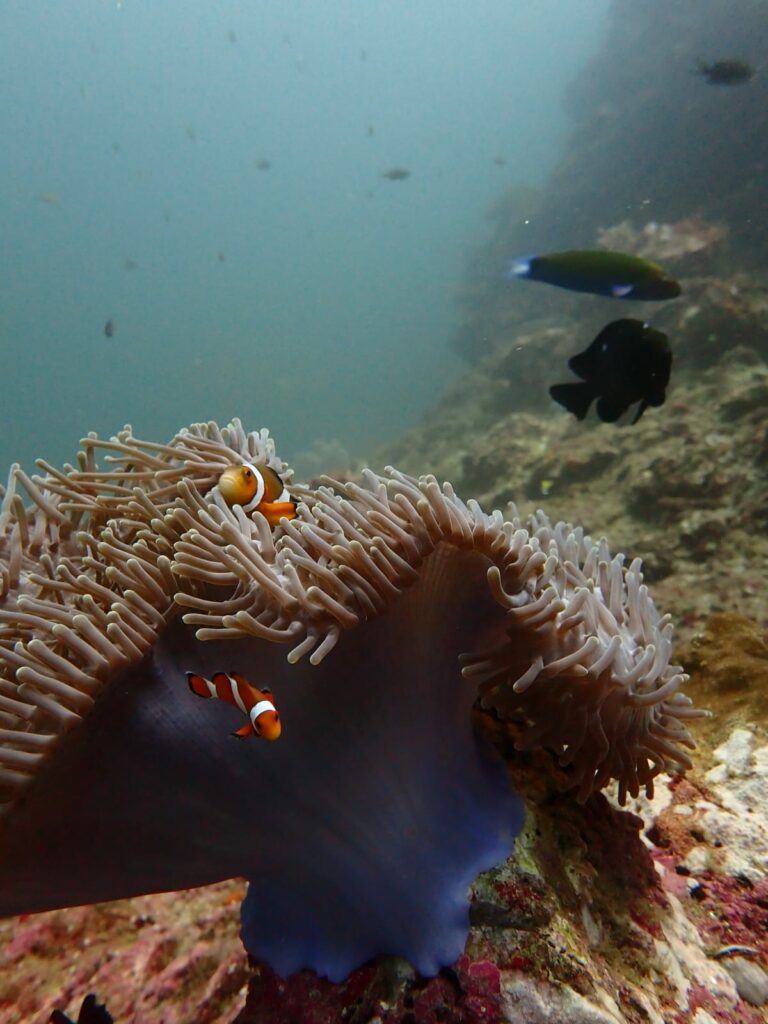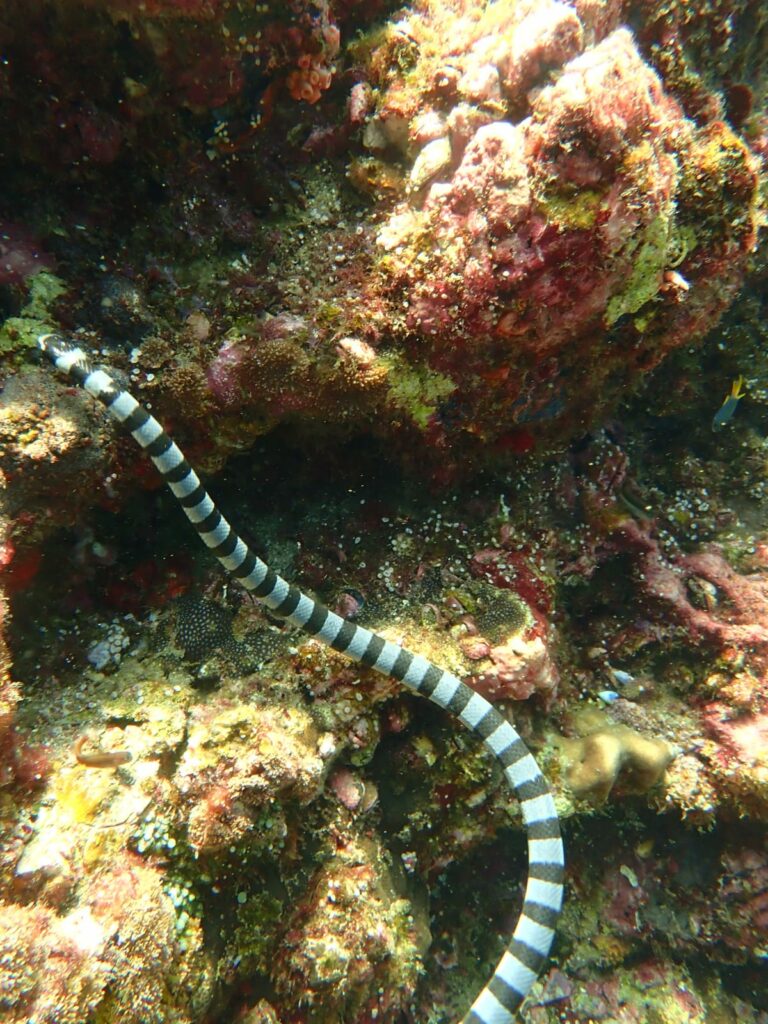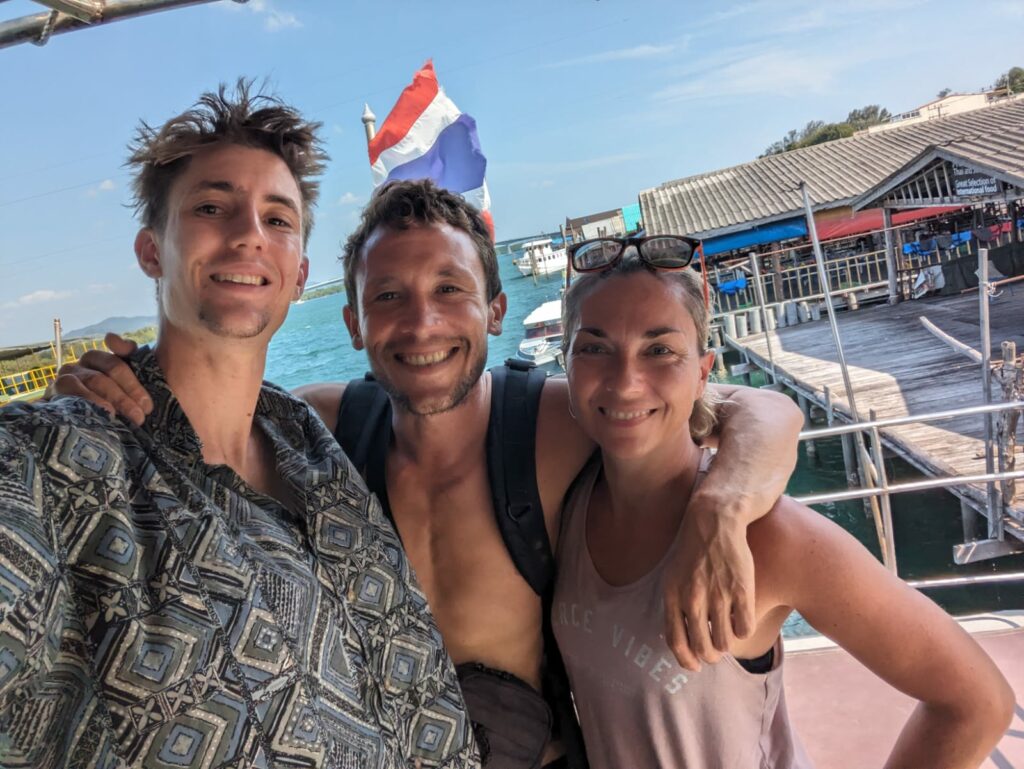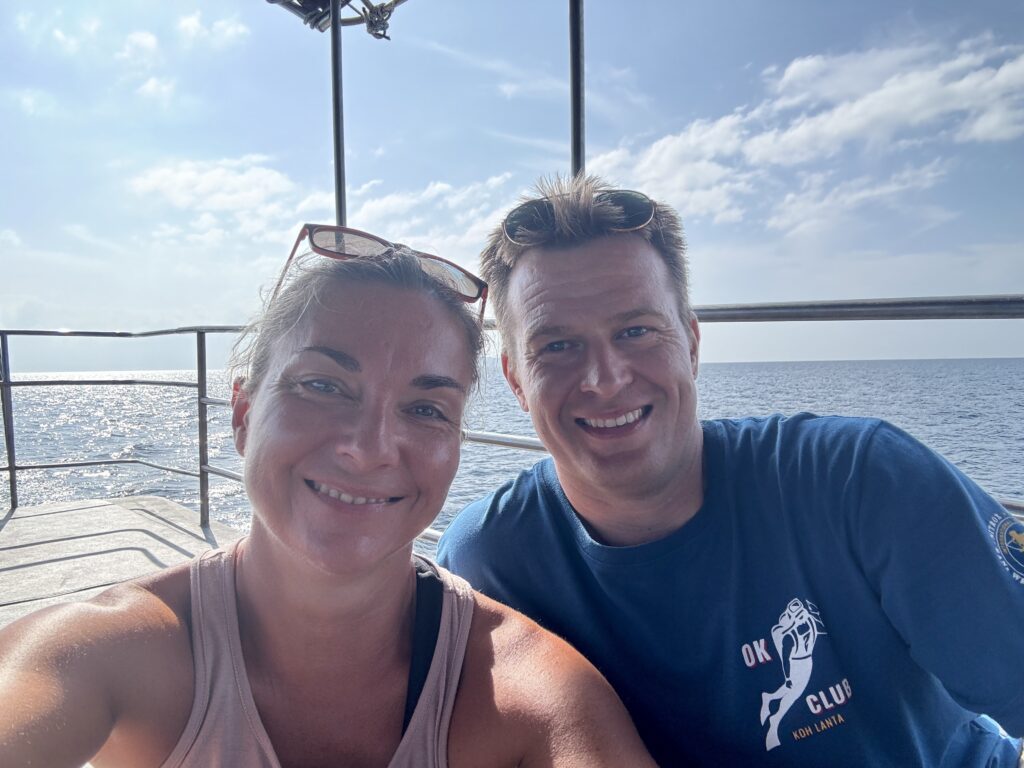I have been thinking of doing my Open Water Certificate for over a year. But then we went on a Saturday night to Joker’s Bar, and that’s how every good story starts or my plan to get my OWD certificate in 2023 ends ;-). Being back from January to March 2024 I thought it would be the perfect opportunity to finally start diving on Koh Lanta with OK Club Diving Center. Little did I know that I would be hooked on diving for good after the first dive. They should put those signs that you also find on cigarettes – to warn you that this shit might be addictive.
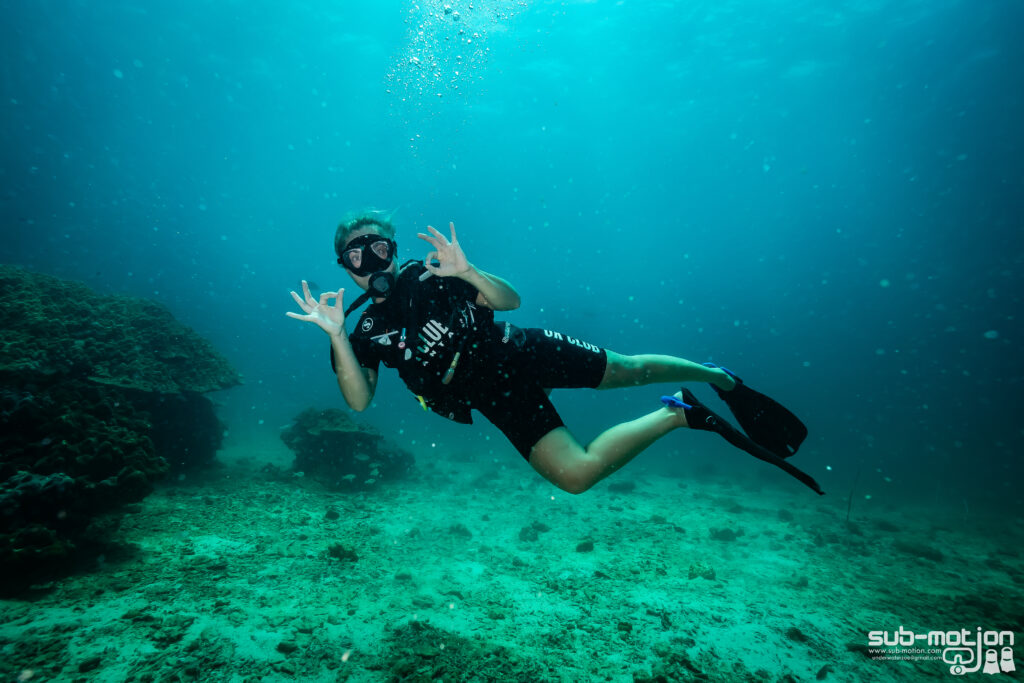
Highlights during my OWD course
To give you a small sneak peek of what I have experienced during the course I want to share my top highlights from the 3-day Open Water Divers course. There is nothing that was not amazing and breathtaking during the OWD course. But if I had to narrow it down to 5 things that I enjoyed the most, this would be the list:
- seeing the 18m depth for the first time on my dive computer
- getting my equipment ready without needing help: once again thank you Seb for your patience
- staying underwater for more than 50 minutes
- seeing my first Black Tip Reef Shark at Ko Haa
- experiencing the energy and atmosphere on the dive boats
All of those moments were confirmed by the feeling that I had every single time I emerged on the surface after the obligatory 3-minute safety stop 5 m beneath the surface. The feeling that I wished I could have stayed longer in this beautiful underwater world. The urge to go down immediately for another dive. The need to do this every single day for the rest of my life.
And now let’s talk details and start with what Dive Center I chose to take my certificate.
Choosing your Dive Center
I already decided last season which dive center I would do it. The decision was pretty easy – OK Club Diving Center was my first choice. Not only because I already knew the owner André and his fabulous wife Saara from previous seasons, but also because the Dive Center didn’t seem to be one of those “get as many customers as possible with the least amount of effort” places. I assumed I would be better cared for and preferred a more chilled and relaxed atmosphere. And that is exactly what I got: a great atmosphere with amazing people and qualified trainers and dive masters.
Day 1: Theory and pool session
So the first day of theory was like theory sessions when you are out of school for over 20 years … but André tried hard to make it fun and interesting. The thing was that I had already gone through the whole theory before I started the course, so there was not much that I hadn’t heard before. But it was really good to hear everything once again and repeat the theory.
After the morning theory session, we got some lunch, lucky me, from one of my favorite places on the island. Until then I hadn’t managed to go to Yawee for some great Thai food. It seems I just had to start an OWD to get my favorite Yawee chicken and Morning Glory :-). After satisfying our bellies with some yummy Thai dishes, we squeezed our happy bellies into the wetsuits and assembled our equipment. This means putting the BC on the tank and connecting the regulator and second stage to the tank, checking the fins and mask, and preparing the weight belt.
In my case, we started immediately with skill training, namely putting on your BC in the water. The reason for that is that for several years I have had some back issues, which makes it impossible for me to carry heavy loads. And a tank with the whole BC things attached definitely classifies as too heavy.
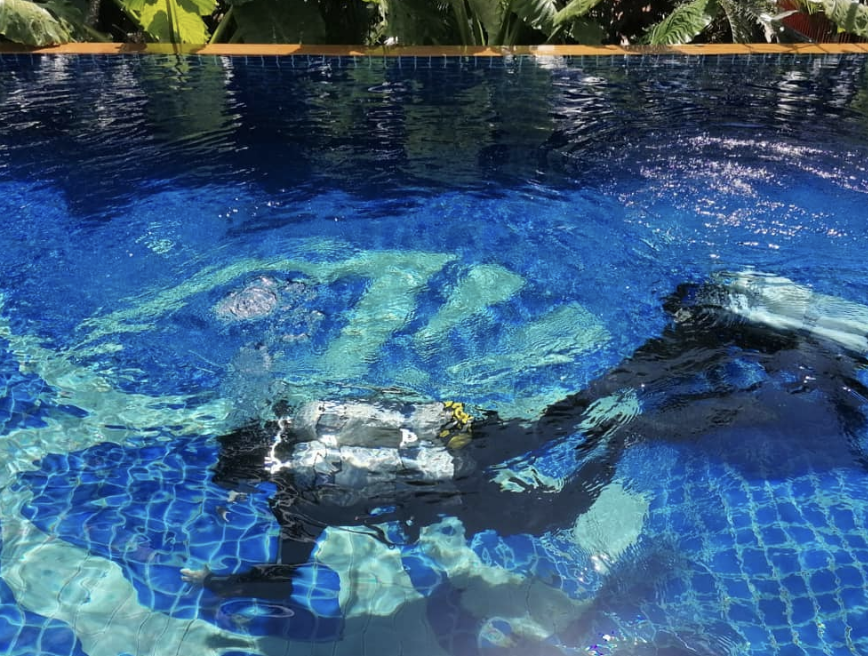
It turns out that after failing at least 5 times I finally got the hang of it and managed to assemble my BC including a tank while swimming like a drowning beetle on my back in the pool. *Whoopwhoop* – first skill mastered. After that André showed us what skills we would practice during the next couple of hours and that’s when the fun part started.
Clearing your mask underwater
The first skill and probably most important skill is to clear your mask underwater. Even when you think you have the best mask ever there are tons of reasons why you can still get some water inside your mask while being several meters beneath the surface: you forgot that you shouldn’t put cream on your face before diving, some little nasty hair got between your face and the mask, or you just had a bad day.
Therefore you must know how to clear your mask no matter where or how deep you are. So we started with obviously getting water into our masks on purpose and then doing the “head down, press the mask to forehead, move head upwards, and breathe out strong through your nose” thing. Surprisingly to André all of us managed to tackle this first skill super fast and so we moved on to the next one.
Retrieving your regulator
Even if it doesn’t seem very likely it definitely is possible to lose your regulator during a dive. Which means you lose the ability to breathe underwater. So what we did is to get rid of our regulator and try to get it back in two different ways. First, you do the “I have an amazing hip and great ass” thing. This means you move your straight arm along your right leg and make a swing movement to the back and hopefully grab your regulator and can put it back in your mouth. If this very sexy movement doesn’t work, you grab with your right hand behind your head to where all the “tubes” are attached and grab the top right one – which should be your regulator.
After being able to lose your regulator, find it (two ways), put it back in, and clear it from water (either blowing out the air by breathing out hard or pressing the button with a fish tongue), we moved on to another mask skill.
Reattaching your mask
The one skill that a lot of people struggle with. I have to admit being without your mask underwater, then having to put it back on, and also getting rid of all the water is not the most comfy thing to do. But it once again is just a skill that you have to practice. Practicing is what we have been doing during our pool session at Lanta Sport Resort. After several run-throughs, taking off your mask, being guided by another diver for what feels like ages, and then putting your mask back on and clearing it, André finally announced that we were ready for the next step.
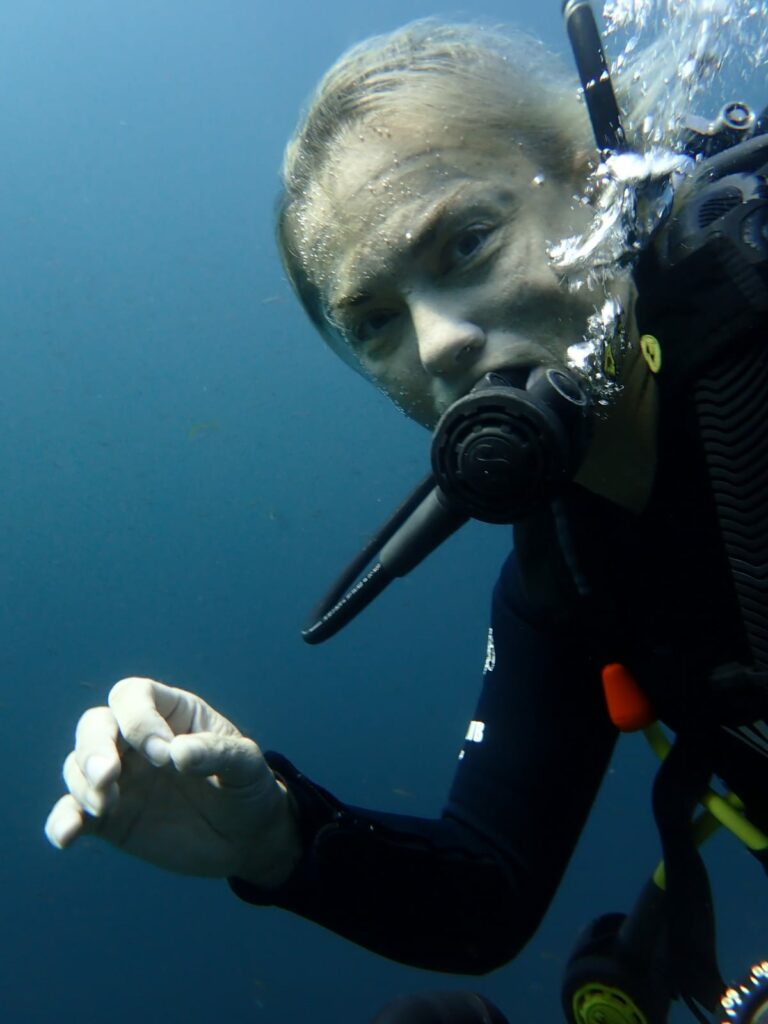
If your regulator fails you
I have to admit that the skill that I really would prefer not to need any time soon was the last one that we learned during our pool session. When your regulator for whatever reason isn’t able to provide you with the proper amount of air you might need to do the “flip your head and freeze your teeth” thing. This means that you are “blowing air directly from your regulator through half of your mouth” – not good for my temperature-sensitive teeth, but at least one more box checked on the skills-list.
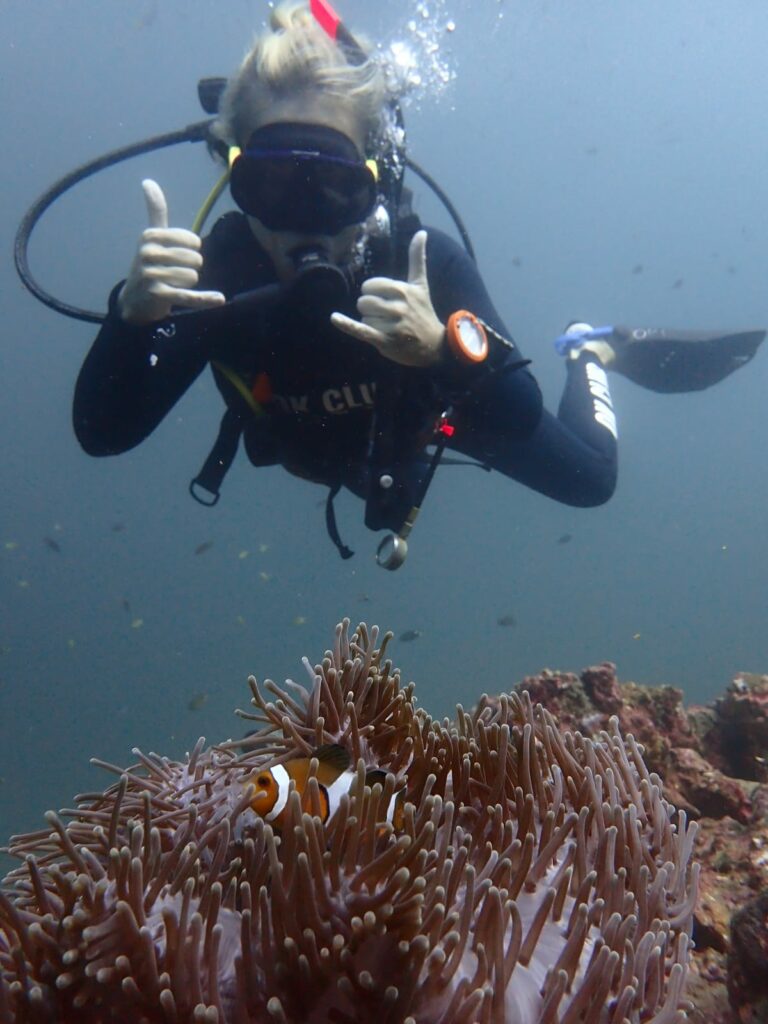
After 4 hours in the pool, we finished the day by disassembling our equipment and cleaning it by the book. TBH I love this part because every good sport requires you to prep and also to clean and store your equipment, so this part of the course is for me essential.
Although the 4-hour pool session was long and I have never before been freezing so much on Lanta, I really appreciate André’s effort and commitment of to make sure that we would all be 100% ready for our first real dive in the sea.
Day 2: 1st dive day – dive #1 & #2
The second day of the OWD course started pretty early. Getting up at 5:30 AM to be able to do my back exercises and my yoga, I met André in front of the shop at Lanta Sport Resort at 6:50 AM. Another part that I loved about doing the course with OK Club Diving Center – they are early risers as well 😉
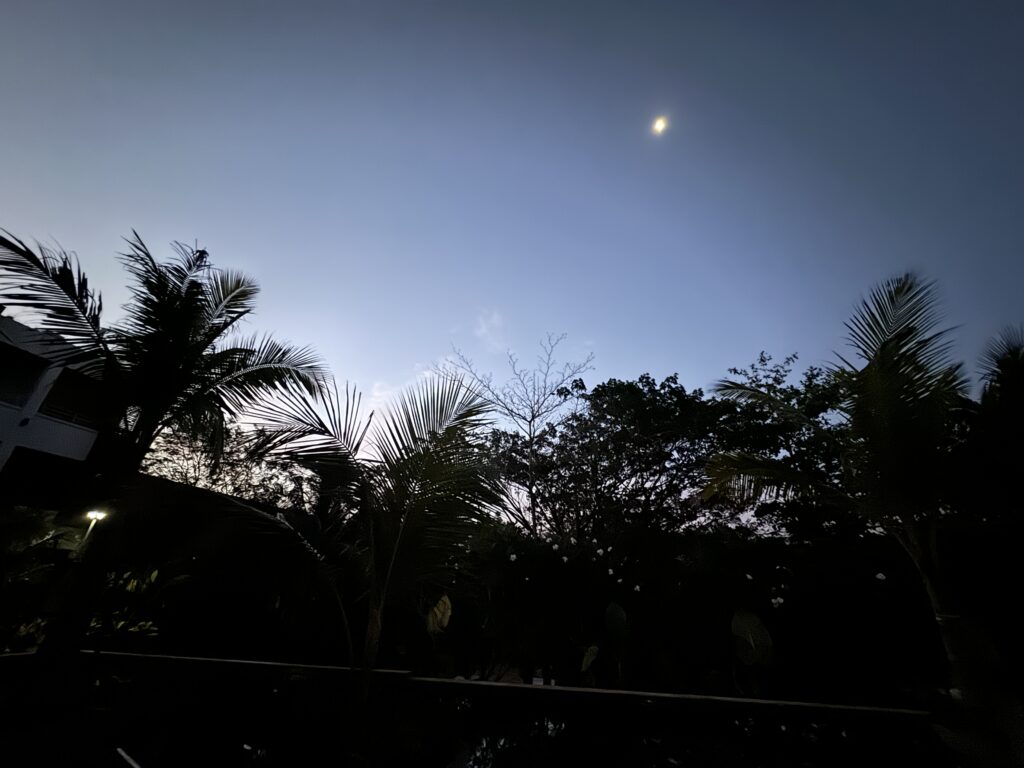
All the equipment was already prepared and everyone had their own bag with a name tag. This was a nice touch to have your own equipment bag – already makes you feel like a serious diver.
After driving to the pier and getting on the boat, we had a short briefing about how to behave on the boat, recycling, breakfast, lunch, and also the most important thing – the horn. Because as soon as you hear the horn (my favourite sound on the boat), it’s time to get into your wetsuits 😉

Ko Haa here we come 💙
Being briefed by our dive master Thomas about our dive spot and also being asked several theory questions – it still was only the 2nd day of our OWD course – we spent 2 hours on the boat on our way to Ko Haa – our diving spot for the day.
One part of the OWD is to be able to assemble your own equipment. It took me several dives to master this skill and I am pretty sure that the next time I will go diving, I will still need some help but only practice can make you better, right? That’s exactly the reason why I also assembled my own equipment on every single fun dive I did after finishing my OWD and will always *pinkyswear* do it myself.
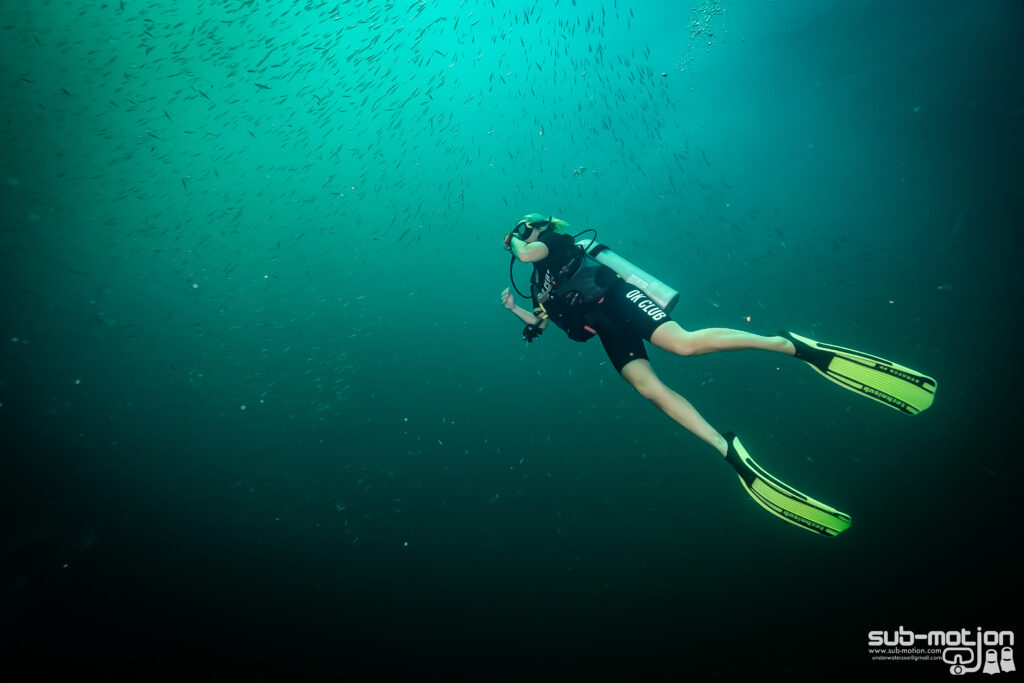
How to assemble your equipment:
- Find your tank (on every boat there is a map that shows you where each diving center has its tanks, and I only figured that out on my very last dive of the season)
- get your bag with your name tag
- retrieve your BC (buoyancy compensator)
- put it on the tank (in my case readjusting it at least 15 times)
- check the air in the tank by opening the tank and smelling the air
- assemble the 1st and 2nd stages, the gauge, BC inflator/deflator attaching everything the way it should be
- put away the octopus (your alternate air source) in the corresponding side pocket
- check the functionality of the regulator, octopus, and the BC
- prepare your weight belt (in my case: 4 x 0.8kg)
- attach your mask to the BC and
- prepare your fins
Seb (Dive Master): “So tell me Kasia, what could the reason be for your gauge going crazy while you are testing your regulators?”
Note to myself: when your gauge is going crazy while you are breathing through your regulator it is probably because you didn’t open the tank fully – thanks Seb for your patience 🤦♀️
The most beautiful sound – The Horn
The sound every diver waits for while on the boat is the horn. That’s when everyone gets up, goes downstairs, and gets into their wetsuits. So that is exactly what we did: Thomas, Serge (DM in training), and my buddy Steven went downstairs and while everyone else was getting into their BCs after squeezing themselves into their wetsuits, I was following one of the Thai crew guys carrying my BC including the tank to the back of the boat with mask and fins in my hands.
Waiting for the rest of my team, I finally got the sign from Thomas to get into the water: right hand on your mask, left hand on your belly, one step forward, and “jump” into the water. After emerging I needed to get back to the boat and grab my floating BC that was kindly put into the water by one of the crew members.
Skill training in progress
Grabbing my floating BC as if my life depended on it, I did the thing that we have been practicing in the pool: “grab the top with your left hand, the bottom with your right hand, push the bottom down, and jump on it like you would ride your rocking horse”. Halfway there. Second part: floating in the water with your BC beneath you, put your arms through the arm loops, clip the breast strap (don’t make it too tight), close the waist belt, clip the waist strap, tighten the shoulder straps, and voila, you’re good to go.
The first day and therefore my first two dives in the ocean were absolutely amazing. I had some troubles with my ears, but that was a known problem and I will have to probably live with that. And also Thomas, our dive master during our first OWD day on the sea, was super patient. We saw a lot of cool fish and also a black-tip reef shark. We managed to stay underwater for more than 50 min on both dives which seems to be pretty good for OWD students.
Good air consumption – way to go team!
On our way back, we went through some further theory, disassembled and cleaned the equipment, and chilled on the boat while having a delicious lunch.
Going with the big boat means that there are other diving companies sharing the boat. The amazing thing is that all the dive masters know each other and seem to be a big happy family, which makes the whole diving experience so much more fun. The only thing that I might change would be to get rid of the Pepsi and get some Coke 🙂
Day 3: 2nd dive day – dive #3 & #4
Because I stayed on Lanta for more than 2 months I was very grateful for the possibility of doing my OWD not on 3 consecutive days but with some time in between. On the third day of my OWD, we once again started early in the morning, going to Ko Haa by speedboat.
This time I went with André which meant a lot more theory, tons of skills training, but also enjoying a lot of beautiful fish and corals.
Arriving back at the shop I took my exam and passed with only one wrong answer: 71% of the planet’s surface is water! I can deal with that result, although 100% would have been nicer 😉
After finishing the exam there might have been a photo shoot of some “compromising” pictures, which I am still eager to receive or to get blackmailed with.
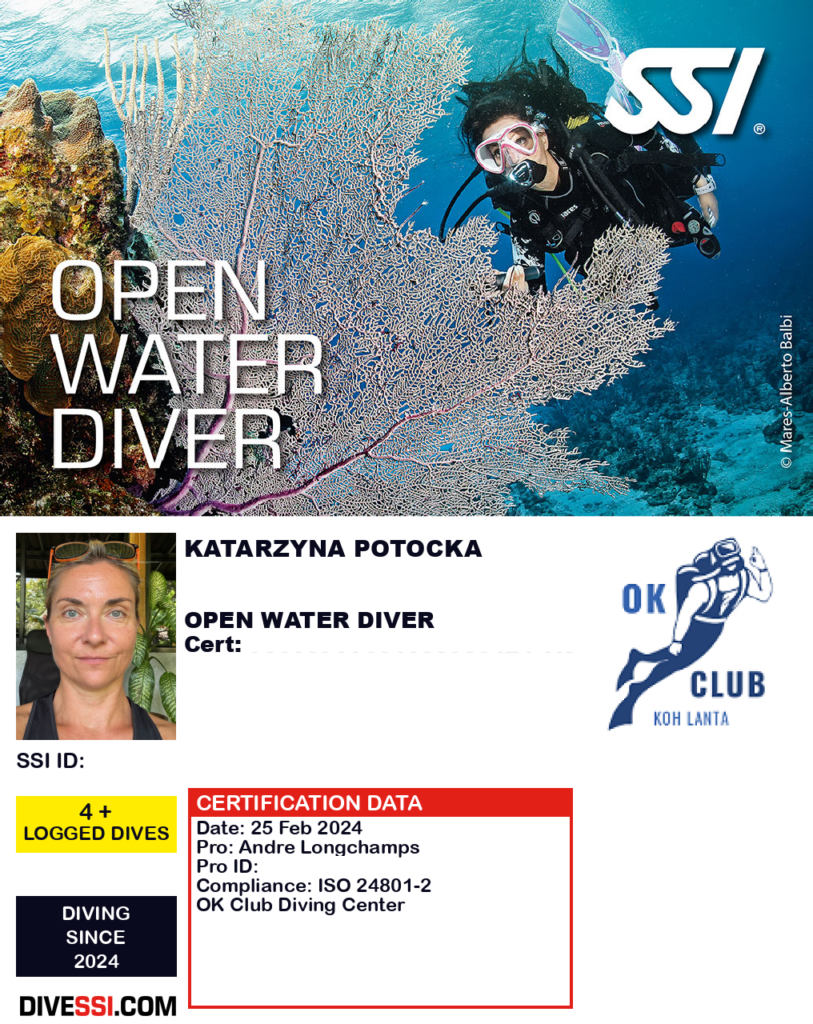
Also now I could 100% confirm what I was pretty sure I knew already after the first couple of minutes of pool session on Day 1 that I have found my new passion and knew that I have totally and 100% fallen in love with diving 💙.

But the diving itself is not the only thing that made me fall in love with this sport. It is also meeting amazing like-minded people and other fun divers, but also instructors and DMs. After just a couple of dives, you already feel like part of a big, happy, and fun family.
I have to admit that getting my OWD with André and his team from OK Club Diving Center was one of the most fun adventures I have experienced this season on Koh Lanta.
What’s next?
Sooooo … I might be a bit crazy but I just signed up for a one-week diving trip. I am going Egypt with people I don’t know. One reason for that is that already on my last dive on Lanta I was thinking of how I will manage to not dive for the next 9 months. The second reason was that I already was thinking of getting my Advanced Course next season for which I need 40 dives. Doing at least 3 dives a day, for 6 days in a row in Egypt would get me 18 dives closer to my goal: becoming an advanced diver, a deep water diver, a dive master, and finally at some point an instructor. Well, you have to have some decent goals in life, don’t you 😉
So the long-term goal is to go back to Koh Lanta next season to get my next certificate and obviously do some more diving on Koh Lanta with OK Club Diving Center.
